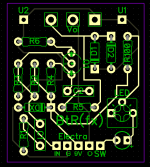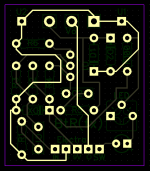Ground plans are good and can eliminate a whole bunch of extra manual routing. Right angles are "bad", but it's honestly more of a cosmetic problem. There are a number of traces that could take more direct routes between the components. Go in one direction as far as you can, then turn rather than having jogs in middle. Use the verification menu to apply some sanity checks to your layout, especially if you add a ground plane. It'll help you find places where it might be broken. You don't need to always follow the rat lines. If multiple components share the same net you can connect them in any order, which might simplify your routing a bit. I'm also a total rookie as far as this stuff is concerned, but those are a few suggestions.



